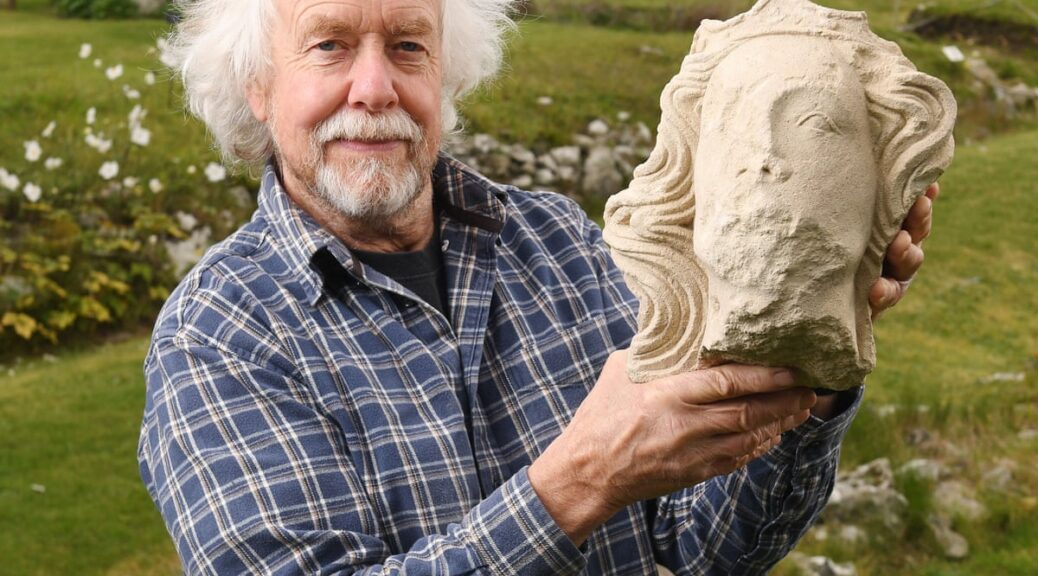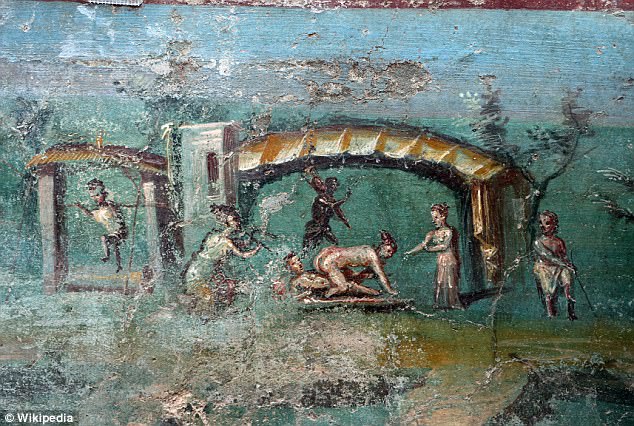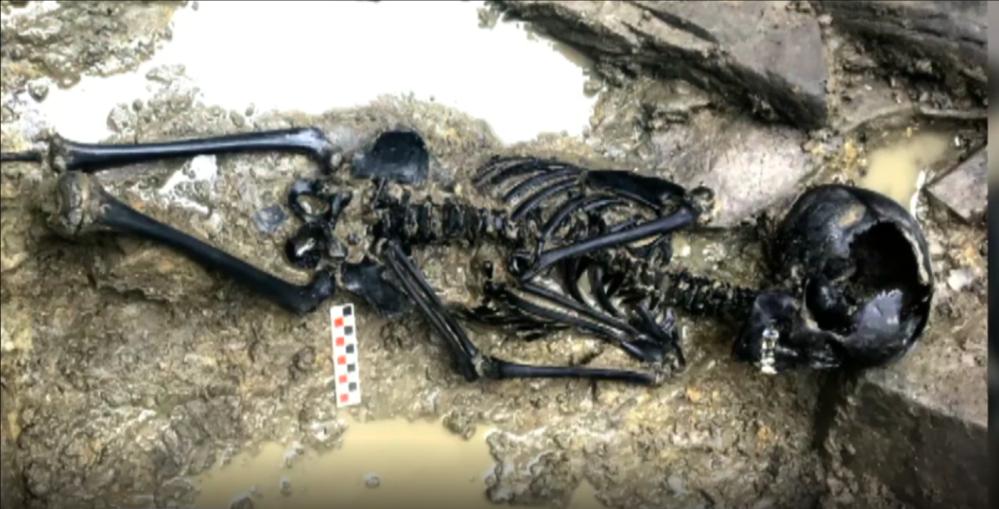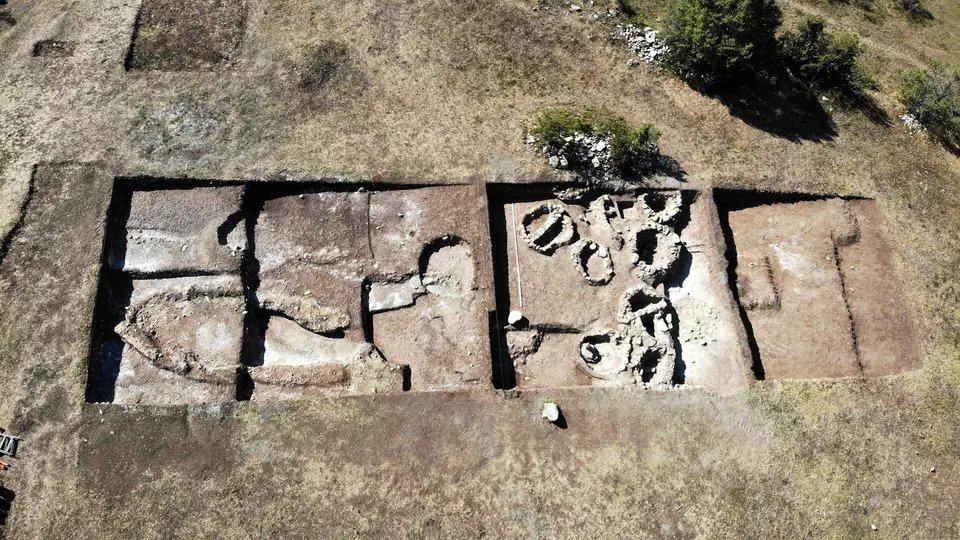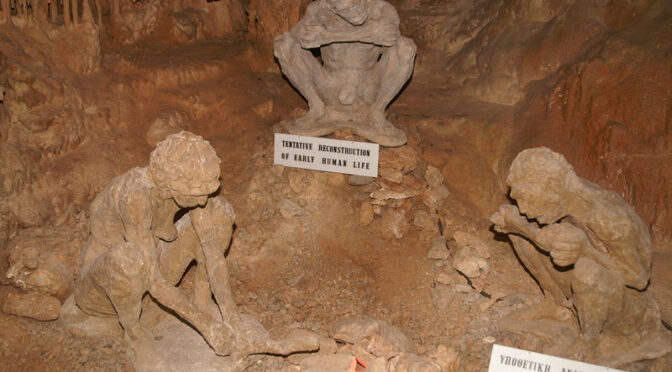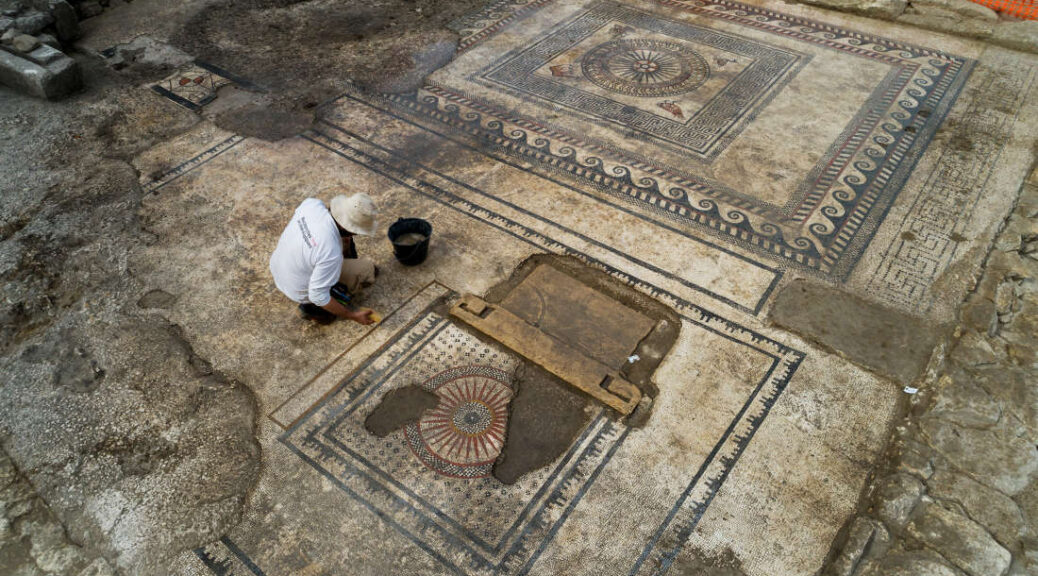Potential Royal Statue Fragment Unearthed in England
The Guardian reports that a team of researchers led by archaeologist Julian Richards unearthed a carved stone head at the site of Shaftesbury Abbey, which was founded as a religious house for women in southwestern England in the late ninth century by Alfred the Great and dissolved in the sixteenth century by Henry VIII during the English Reformation.
At first, Julian Richards, who led the dig in Dorset, thought the head, caked in soil, was topped by some sort of cap. “I thought: ‘This is strange,’” he said. “Who could this be, wearing that sort of headgear? Then someone pointed out it wasn’t a cap, but a crown. There are raised bits around the headband representing jewels.”
Painstaking detective work has led to the conclusion that the head dates back to the 1340s and might – we may never know – be that of Edward II.

Richards said it was an exciting find. “It is definitely a royal figure. It might be Edward II, but we’re not sure. It could be a stylized image of a Saxon king, possibly even Alfred. The quality of the carving is absolutely stunning. You can even see the eyelids.”
The reign of Edward II from 1307 to 1327 is sometimes characterized as a failure. Lowlights included a defeat by Scottish forces at Bannockburn and being forced to relinquish the crown in favour of his 14-year-old son. He was also probably murdered. His close, possibly sexual, relationship with Piers Gaveston was depicted in the 16th-century Christopher Marlowe play Edward II.
For Richards, the identity of the figure is not the point. It is what the statue tells us about the history of the abbey that he is most interested in.
Shaftesbury Abbey was founded by Alfred the Great, the King of the Anglo-Saxons, in 888. It was the first religious house solely for women and Alfred installed his daughter Æthelgifu as its abbess.
The abbey prospered for centuries, but it was closed down in 1539 by order of Henry VIII and, over the next few years, it crumbled.
Archeologists have concluded that the stone head would have formed part of a previously unknown royal gallery of statues of monarchs, and would have screened the nuns from other worshippers.
When the abbey was destroyed, local people carried off stonework to build houses and walls. The head would have been useless to them. “They just wanted stone blocks to build houses. They didn’t want things like this head. It wasn’t any use to them,” said Richards.
It may be that the statue was deliberately targeted by Henry VIII’s people. “Somebody has taken a sledgehammer and smashed this up because it’s broken across the neck,” said Richards. “Or maybe they just pushed it over, it fell and the nose got broken.”
The head was found during a dig in 2019. Since then, the focus has been on dating and trying to identify it. The Covid-19 crisis has prevented the head from going on display, but it is hoped that members of the public will be able to visit it at the abbey museum in the spring.
Other objects that have been found ranging from clay pipes and industrially produced pottery of the last three centuries down to rare shards of late Saxon pottery, worked flints from 7,000 years ago, and three medieval silver pennies.
Another find close to the stone head that thrilled Richards just as much as a single large black bead made of a jet from Kimmeridge on the Dorset coast.
Richards said it was believed to have once been part of a nun’s rosary, worn smooth from years of pious handling. He wonders if the bead was lost when she was thrown out of the abbey during the dissolution.
“Think about it; it would have been one of this nun’s very few possessions. Was the rosary broken when she was evicted? She was living a life of quiet prayer, and then suddenly her whole world was destroyed and she lost everything. For me, that is a very powerful object.
